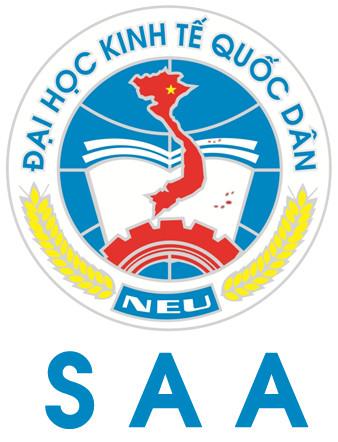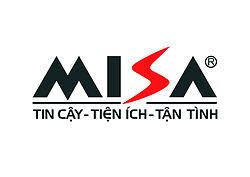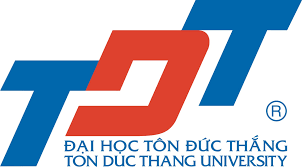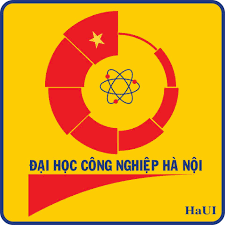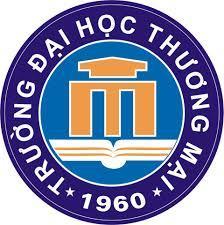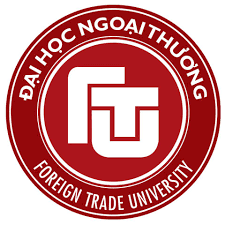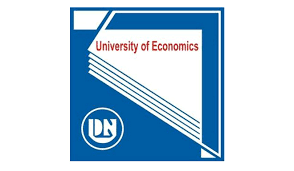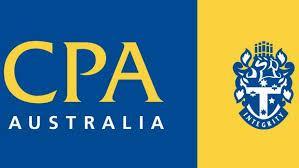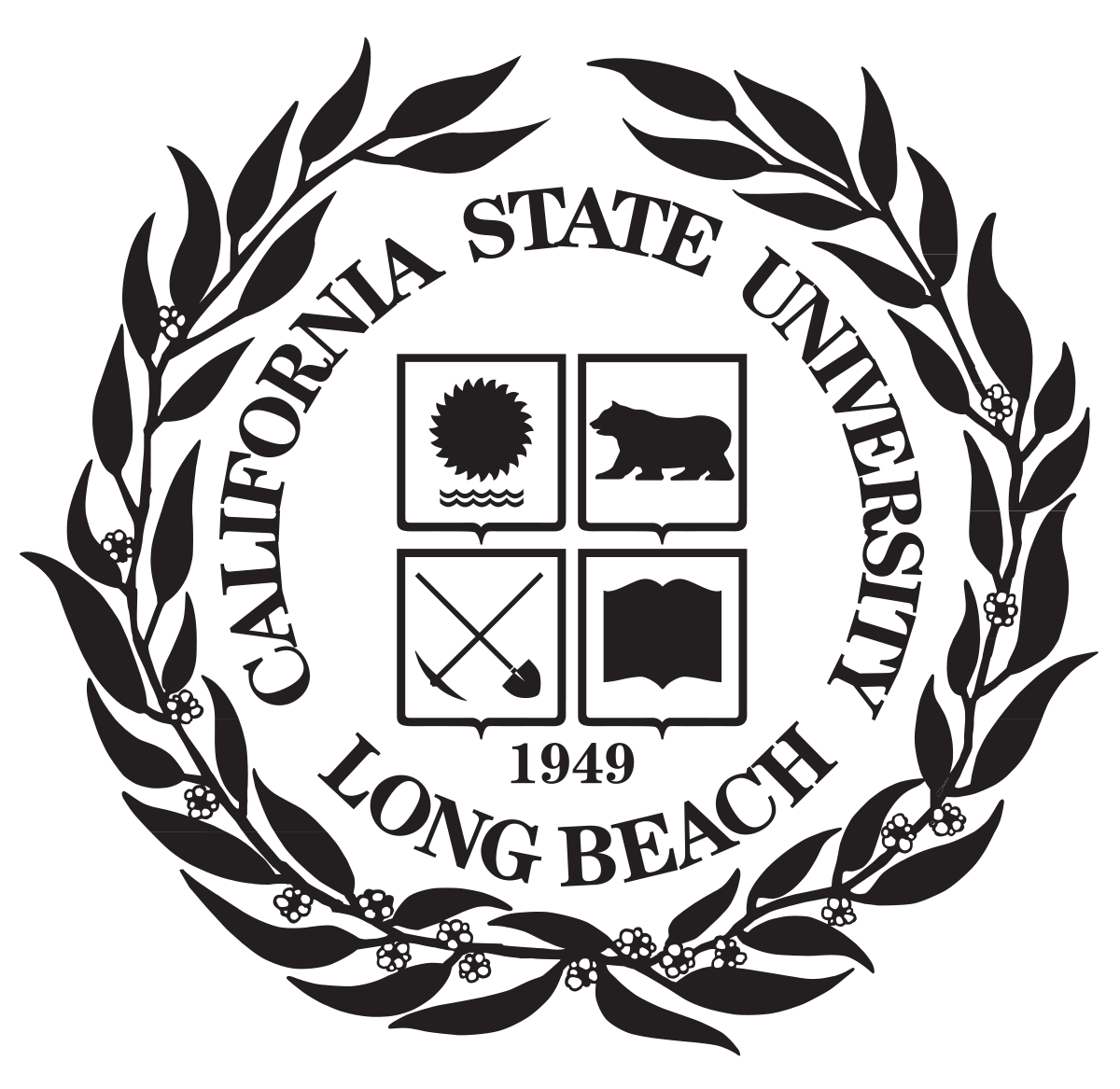The impact of supply chain quality management on firm performance: Empirical evidence from Vietnam
- 31-07-21
- NCKH Giảng viên
A B S T R A C T
This research is conducted to investigate the impact of supply chain quality management (SCQM) on supply chain performance (SCP). Data are collected by using questionnaire delivered to 120 manufacturing companies listed on Vietnamese stock market. Three proxies are used to measure supply chain quality management include (i) internal quality management, (ii) upstream quality management and (iii) downstream quality management. Supply chain performance is measured by customer satisfaction regarding three aspects consist of quality, cost and time to delivery. The statistical methods approaches are employed to address the research issues including Cronbach’s Alpha, Explanatory Factor Analysis (EFA) and Ordinary Least Squares (OLS). The findings show that supply chain quality management had significant positive effect on supply chain performance of manufacturing companies listed on Vietnamese stock market. Based on the research results, some key intuitive recommendations are proposed aiming to improve the supply chain performance at operational level of Vietnamese enterprises.
1. Introduction
Quality is the key factor help enterprises survive in competitive market. This is a common statement in the quality policy of businesses, especially manufacturing enterprises. Therefore, quality shows great contribution on the success of the organizations, helping businesses survive and thrive in the context of increasingly competition in the market. From a strategic perspective, quality is the source of differentiation, improving quality is one of the pillars that help build competitive advantage of businesses in the market. Quality management has become one of the research topics that many scholars over the world to analyze the relationship between quality and firm performance as well as find the way to apply and implementing quality management in enterprises. However, there is a challenge facing businesses and managers that competition has shifted from competition between businesses to supply chain competition. Therefore, currently quality management is not only at the level of internal management but also to pay attention to external practices, cross the boundaries of organizations, integrate businesses with customers and suppliers. Manufacturing businesses currently spend an average of 50% to 80% of theirproduction costs on the purchase of raw materials, fuels, parts, and components from many suppliers around the world. Optimizing production costs requires that producers not only select the right suppliers but also have a good quality management system of the entire supply chain to minimize risks and quality issues of products. Weak supply chain quality management (SCQM) capacity will lead to product quality problems, slow delivery, deterioration of customer reliability and satisfaction. Especially in the context of manufacturing industry, about 50% of the causes of product recall are originated from part suppliers and contract manufacturing. The objective of this paper is to measure and assess the current status of practices of supply chain quality management in the context of Vietnam. Then, we investigate the impact of supply chain quality management on supply chain performance of Vietnamese manufacturing enterprises. This research develops and verifies an analytical measurement framework for supply chain quality management in manufacturing enterprises of developing countries in general and Vietnam in particular and includes three main components: internal quality management, upstream quality management, downstream quality management. The results provide empirical evidence on the positive impact of supply chain quality management on supply chain performance in terms of quality, cost, and delivery time. The remainder of the paper is structured as follows: In Section 2, Literature Review; the next section demonstrates Research Hypotheses; Section 4, presents the Research Methodology; Results and Discussion about the impact of supply chain quality management on performance are presented in Section 5. Finally, the conclusion and recommendations are explained in Section 6.
2. Literature Review
The concept of supply chain management (SCM) was introduced in 1980s. It was originally involved with purchasing management, inventory management, and shipping operations within the supply chain. After that, this concept was expanded to include the management of all functions in a supply chain. According to Chopra and Meindl (2001), “Supply chain management involves managing flows between processes in the supply chain to maximize total profit”. Sila et al. (2006) show that SCM is related to the management of product, information and financial flows in both directions: downstream (towards customers) and upstream (towards suppliers) in the supply chain. SCM also entails making decisions about site location, product selection and production capacity, how to produce, and ultimately, how to distribute the products to customers and related services before, during and after sales. Empirical research on quality management has developed over the past 20 years. It has helped supplement the knowledge of quality management theory and practice. Some empirical studies such as Flynn et al. (1994), Saraph et al. (1989), Sila and Ebrahimpour (2005) have defined and evaluated quality management practice activities. Many studies have shown a positive relationship between quality management practices and various aspects of business performance such as production costs, on-time delivery, and production capacity flexibility. Prior to the 2000s, studies showed that quality management efforts were primarily focused on improving product quality at manufacturing processes within the enterprise. However, with the increasing uncertainty of the business environment, the final product quality depends on the entire constant flow in the supply chain. Simchi-Levi et al. (2000) stated that satisfying customer satisfaction can only be achieved when the entire supply chain is committed integrated and closely coordinated to pursue goals, activities and innovation. Traditional comprehensive quality management practices need to be moved to a different approach on the supply chain extending operations with supply chain partners both upstream and downstream to collect all potential benefits of quality improvement to satisfy customers (Robinson & Malhotra, 2005; Sila et al., 2006). Integrating the two concepts of quality management and supply chain management proposed by many scholars, leading to the introduction of quality management concept. Supply Chain Quality Management (SCQM), offers the potential to deal with future supply chain challenges (Flynn & Flynn, 2005; Foster, 2008; production costs on the purchase of raw materials, fuels, parts, and components from many suppliers around the world. Optimizing production costs requires that producers not only select the right suppliers but also have a good quality management system of the entire supply chain to minimize risks and quality issues of products. Weak supply chain quality management (SCQM) capacity will lead to product quality problems, slow delivery, deterioration of customer reliability and satisfaction. Especially in the context of manufacturing industry, about 50% of the causes of product recall are originated from part suppliers and contract manufacturing. The objective of this paper is to measure and assess the current status of practices of supply chain quality management in the context of Vietnam. Then, we investigate the impact of supply chain quality management on supply chain performance of Vietnamese manufacturing enterprises. This research develops and verifies an analytical measurement framework for supply chain quality management in manufacturing enterprises of developing countries in general and Vietnam in particular and includes three main components: internal quality management, upstream quality management, downstream quality management. The results provide empirical evidence on the positive impact of supply chain quality management on supply chain performance in terms of quality, cost, and delivery time. The remainder of the paper is structured as follows: In Section 2, Literature Review; the next section demonstrates Research Hypotheses; Section 4, presents the Research Methodology; Results and Discussion about the impact of supply chain quality management on performance are presented in Section 5. Finally, the conclusion and recommendations are explained in Section 6. 2. Literature Review The concept of supply chain management (SCM) was introduced in 1980s. It was originally involved with purchasing management, inventory management, and shipping operations within the supply chain. After that, this concept was expanded to include the management of all functions in a supply chain. According to Chopra and Meindl (2001), “Supply chain management involves managing flows between processes in the supply chain to maximize total profit”. Sila et al. (2006) show that SCM is related to the management of product, information and financial flows in both directions: downstream (towards customers) and upstream (towards suppliers) in the supply chain. SCM also entails making decisions about site location, product selection and production capacity, how to produce, and ultimately, how to distribute the products to customers and related services before, during and after sales. Empirical research on quality management has developed over the past 20 years. It has helped supplement the knowledge of quality management theory and practice. Some empirical studies such as Flynn et al. (1994), Saraph et al. (1989), Sila and Ebrahimpour (2005) have defined and evaluated quality management practice activities. Many studies have shown a positive relationship between quality management practices and various aspects of business performance such as production costs, on-time delivery, and production capacity flexibility. Prior to the 2000s, studies showed that quality management efforts were primarily focused on improving product quality at manufacturing processes within the enterprise. However, with the increasing uncertainty of the business environment, the final product quality depends on the entire constant flow in the supply chain. Simchi-Levi et al. (2000) stated that satisfying customer satisfaction can only be achieved when the entire supply chain is committed integrated and closely coordinated to pursue goals, activities and innovation. Traditional comprehensive quality management practices need to be moved to a different approach on the supply chain extending operations with supply chain partners both upstream and downstream to collect all potential benefits of quality improvement to satisfy customers (Robinson & Malhotra, 2005; Sila et al., 2006). Integrating the two concepts of quality management and supply chain management proposed by many scholars, leading to the introduction of quality management concept. Supply Chain Quality Management (SCQM), offers the potential to deal with future supply chain challenges (Flynn & Flynn, 2005; Foster, 2008;production costs on the purchase of raw materials, fuels, parts, and components from many suppliers around the world. Optimizing production costs requires that producers not only select the right suppliers but also have a good quality management system of the entire supply chain to minimize risks and quality issues of products. Weak supply chain quality management (SCQM) capacity will lead to product quality problems, slow delivery, deterioration of customer reliability and satisfaction. Especially in the context of manufacturing industry, about 50% of the causes of product recall are originated from part suppliers and contract manufacturing. The objective of this paper is to measure and assess the current status of practices of supply chain quality management in the context of Vietnam. Then, we investigate the impact of supply chain quality management on supply chain performance of Vietnamese manufacturing enterprises. This research develops and verifies an analytical measurement framework for supply chain quality management in manufacturing enterprises of developing countries in general and Vietnam in particular and includes three main components: internal quality management, upstream quality management, downstream quality management. The results provide empirical evidence on the positive impact of supply chain quality management on supply chain performance in terms of quality, cost, and delivery time. The remainder of the paper is structured as follows: In Section 2, Literature Review; the next section demonstrates Research Hypotheses; Section 4, presents the Research Methodology; Results and Discussion about the impact of supply chain quality management on performance are presented in Section 5. Finally, the conclusion and recommendations are explained in Section 6. 2. Literature Review The concept of supply chain management (SCM) was introduced in 1980s. It was originally involved with purchasing management, inventory management, and shipping operations within the supply chain. After that, this concept was expanded to include the management of all functions in a supply chain. According to Chopra and Meindl (2001), “Supply chain management involves managing flows between processes in the supply chain to maximize total profit”. Sila et al. (2006) show that SCM is related to the management of product, information and financial flows in both directions: downstream (towards customers) and upstream (towards suppliers) in the supply chain. SCM also entails making decisions about site location, product selection and production capacity, how to produce, and ultimately, how to distribute the products to customers and related services before, during and after sales. Empirical research on quality management has developed over the past 20 years. It has helped supplement the knowledge of quality management theory and practice. Some empirical studies such as Flynn et al. (1994), Saraph et al. (1989), Sila and Ebrahimpour (2005) have defined and evaluated quality management practice activities. Many studies have shown a positive relationship between quality management practices and various aspects of business performance such as production costs, on-time delivery, and production capacity flexibility. Prior to the 2000s, studies showed that quality management efforts were primarily focused on improving product quality at manufacturing processes within the enterprise. However, with the increasing uncertainty of the business environment, the final product quality depends on the entire constant flow in the supply chain. Simchi-Levi et al. (2000) stated that satisfying customer satisfaction can only be achieved when the entire supply chain is committed integrated and closely coordinated to pursue goals, activities and innovation. Traditional comprehensive quality management practices need to be moved to a different approach on the supply chain extending operations with supply chain partners both upstream and downstream to collect all potential benefits of quality improvement to satisfy customers (Robinson & Malhotra, 2005; Sila et al., 2006). Integrating the two concepts of quality management and supply chain management proposed by many scholars, leading to the introduction of quality management concept. Supply Chain Quality Management (SCQM), offers the potential to deal with future supply chain challenges (Flynn & Flynn, 2005; Foster, 2008;production costs on the purchase of raw materials, fuels, parts, and components from many suppliers around the world. Optimizing production costs requires that producers not only select the right suppliers but also have a good quality management system of the entire supply chain to minimize risks and quality issues of products. Weak supply chain quality management (SCQM) capacity will lead to product quality problems, slow delivery, deterioration of customer reliability and satisfaction. Especially in the context of manufacturing industry, about 50% of the causes of product recall are originated from part suppliers and contract manufacturing. The objective of this paper is to measure and assess the current status of practices of supply chain quality management in the context of Vietnam. Then, we investigate the impact of supply chain quality management on supply chain performance of Vietnamese manufacturing enterprises. This research develops and verifies an analytical measurement framework for supply chain quality management in manufacturing enterprises of developing countries in general and Vietnam in particular and includes three main components: internal quality management, upstream quality management, downstream quality management. The results provide empirical evidence on the positive impact of supply chain quality management on supply chain performance in terms of quality, cost, and delivery time. The remainder of the paper is structured as follows: In Section 2, Literature Review; the next section demonstrates Research Hypotheses; Section 4, presents the Research Methodology; Results and Discussion about the impact of supply chain quality management on performance are presented in Section 5. Finally, the conclusion and recommendations are explained in Section 6. 2. Literature Review The concept of supply chain management (SCM) was introduced in 1980s. It was originally involved with purchasing management, inventory management, and shipping operations within the supply chain. After that, this concept was expanded to include the management of all functions in a supply chain. According to Chopra and Meindl (2001), “Supply chain management involves managing flows between processes in the supply chain to maximize total profit”. Sila et al. (2006) show that SCM is related to the management of product, information and financial flows in both directions: downstream (towards customers) and upstream (towards suppliers) in the supply chain. SCM also entails making decisions about site location, product selection and production capacity, how to produce, and ultimately, how to distribute the products to customers and related services before, during and after sales. Empirical research on quality management has developed over the past 20 years. It has helped supplement the knowledge of quality management theory and practice. Some empirical studies such as Flynn et al. (1994), Saraph et al. (1989), Sila and Ebrahimpour (2005) have defined and evaluated quality management practice activities. Many studies have shown a positive relationship between quality management practices and various aspects of business performance such as production costs, on-time delivery, and production capacity flexibility. Prior to the 2000s, studies showed that quality management efforts were primarily focused on improving product quality at manufacturing processes within the enterprise. However, with the increasing uncertainty of the business environment, the final product quality depends on the entire constant flow in the supply chain. Simchi-Levi et al. (2000) stated that satisfying customer satisfaction can only be achieved when the entire supply chain is committed integrated and closely coordinated to pursue goals, activities and innovation. Traditional comprehensive quality management practices need to be moved to a different approach on the supply chain extending operations with supply chain partners both upstream and downstream to collect all potential benefits of quality improvement to satisfy customers (Robinson & Malhotra, 2005; Sila et al., 2006). Integrating the two concepts of quality management and supply chain management proposed by many scholars, leading to the introduction of quality management concept. Supply Chain Quality Management (SCQM), offers the potential to deal with future supply chain challenges (Flynn & Flynn, 2005; Foster, 2008; production costs on the purchase of raw materials, fuels, parts, and components from many suppliers around the world. Optimizing production costs requires that producers not only select the right suppliers but also have a good quality management system of the entire supply chain to minimize risks and quality issues of products. Weak supply chain quality management (SCQM) capacity will lead to product quality problems, slow delivery, deterioration of customer reliability and satisfaction. Especially in the context of manufacturing industry, about 50% of the causes of product recall are originated from part suppliers and contract manufacturing. The objective of this paper is to measure and assess the current status of practices of supply chain quality management in the context of Vietnam. Then, we investigate the impact of supply chain quality management on supply chain performance of Vietnamese manufacturing enterprises. This research develops and verifies an analytical measurement framework for supply chain quality management in manufacturing enterprises of developing countries in general and Vietnam in particular and includes three main components: internal quality management, upstream quality management, downstream quality management. The results provide empirical evidence on the positive impact of supply chain quality management on supply chain performance in terms of quality, cost, and delivery time. The remainder of the paper is structured as follows: In Section 2, Literature Review; the next section demonstrates Research Hypotheses; Section 4, presents the Research Methodology; Results and Discussion about the impact of supply chain quality management on performance are presented in Section 5. Finally, the conclusion and recommendations are explained in Section 6. 2. Literature Review The concept of supply chain management (SCM) was introduced in 1980s. It was originally involved with purchasing management, inventory management, and shipping operations within the supply chain. After that, this concept was expanded to include the management of all functions in a supply chain. According to Chopra and Meindl (2001), “Supply chain management involves managing flows between processes in the supply chain to maximize total profit”. Sila et al. (2006) show that SCM is related to the management of product, information and financial flows in both directions: downstream (towards customers) and upstream (towards suppliers) in the supply chain. SCM also entails making decisions about site location, product selection and production capacity, how to produce, and ultimately, how to distribute the products to customers and related services before, during and after sales. Empirical research on quality management has developed over the past 20 years. It has helped supplement the knowledge of quality management theory and practice. Some empirical studies such as Flynn et al. (1994), Saraph et al. (1989), Sila and Ebrahimpour (2005) have defined and evaluated quality management practice activities. Many studies have shown a positive relationship between quality management practices and various aspects of business performance such as production costs, on-time delivery, and production capacity flexibility. Prior to the 2000s, studies showed that quality management efforts were primarily focused on improving product quality at manufacturing processes within the enterprise. However, with the increasing uncertainty of the business environment, the final product quality depends on the entire constant flow in the supply chain. Simchi-Levi et al. (2000) stated that satisfying customer satisfaction can only be achieved when the entire supply chain is committed integrated and closely coordinated to pursue goals, activities and innovation. Traditional comprehensive quality management practices need to be moved to a different approach on the supply chain extending operations with supply chain partners both upstream and downstream to collect all potential benefits of quality improvement to satisfy customers (Robinson & Malhotra, 2005; Sila et al., 2006). Integrating the two concepts of quality management and supply chain management proposed by many scholars, leading to the introduction of quality management concept. Supply Chain Quality Management (SCQM), offers the potential to deal with future supply chain challenges (Flynn & Flynn, 2005; Foster, 2008; Robinson & Malhotra, 2005; Sila et al., 2006). Supply chain quality management is the concept of integrating two areas of management science, including quality management and supply chain management, which has been proposed by many scholars since the 2000s. This proposal was formed based on theoretical and empirical results of supply chain management activities of multinational manufacturing and service corporations. In the first stage, SCQM is defined as “the participation of all members of the supply channel, crossing the boundaries between enterprises in the continuous and uniform development process of all processes and products, service and work culture, focusing on creating differentiated, competitive productivity through the promotion of products and service solutions that deliver value and customer satisfaction” (Saraph et al., 1989). Later et al. (2001) gave the definition of SCQM with three basic concepts: Supply chain (SC) is a network of suppliers, manufacturers, and customers; Quality (Q) is to meet accurate market needs and achieve fast, profitable customer satisfaction; and Management (M) is to facilitate, encourage quality processes and activities, increase trust for the quality of supply chains. With this definition, we can see that Kuei and Madu (2001) support the belief that the relationship between buyers and suppliers is a prerequisite for sustainable quality performance across the supply chain. Recently, SCQM has been considered as a synergistic effect between supply chain management and quality management, with quality management (QM) in the business as a key to improving performance across the supply chain. As such, it extends the aspect of QM and SCM to the cooperation between all members, pointing out the close relationship between QM and SCM that helps improve the performance of the supply chain (Flynn & Flynn, 2005). Developing this approach, Robinson and Malhotra (2005) identified “supply chain quality management as the official coordination and integration of business processes involving all partner organizations in the channel providing to measure, analyze and continually improve our products, services and processes to create value and achieve customer satisfaction, and ultimately on the market”. Towards a more efficient supply chain performance, Foster (2008) defines “SCQM as a systembased approach to improving performance using opportunities generated by downstream and upstream with suppliers and customers”. He also pointed out seven topics related to supply chain quality management including: (1) customer-focused, (2) quality practices, (3) supplier relations, (4) leadership, (5) practice of human resource management, (6) business results, and (7) safety. Most recently, researchers considered SCQM as a multidirectional concept including internal quality management (IQM) consists of process management, product design, process, quality training, quality management activities at the supply chain level (cooperation with customers and suppliers, quality training at the supply chain level, participation of members in the product design process (Hong et al., 2018). As can be seen, there exists a number of different definitions for SCQM. These definitions reflect differences in theory, experimentation and more importantly, the focus and scope of scholars' research. To study how SCQM affects performance, scholars have developed the aspect of SCQM, also known as SCQM practice activities. The practice of SCQM is defined as a set of daily activities carried out by organizations to achieve the goals of SCQM (Quang et al., 2016). SCQM practice activities have been studied by many scholars in order to develop structures, demonstrate the characteristics of SCQM, as well as assess the impact of each of these practices on performance. Soares et al. (2017); Kuei et al. (2001) proposed eleven structures for measuring SCQM, based on internal quality management practices and the company's relationship with customers and suppliers. Meanwhile, Kaynak and Hartley (2008) developed eight SCQM practices with an internal focus and supplier quality management: leadership, training, staff relations, customer focus, reporting. and quality data, supplier quality management, product or service design and process management. Later, Zeng et al. (2013) proposed the practice of SCQM divided into three groups: internal quality management, upstream quality management, and downstream quality management. Recently, SCQM practices related to information sharing and knowledge management among businesses,suppliers and customers (Hong et al., 2018; Zeng et al., 2013) as well as the application of information systems such as the latest internet technology improve quality results throughout the supply chain (Robinson & Malhotra 2005). The impact of SCQM on performance has also extensively been studied by many scholars to better understand how SCQM practices work on quality results and satisfaction customers (Hong et al., 2018; Kuei et al., 2001; Quang et al., 2016; Sila et al., 2006; Soares et al., 2017; Zeng et al., 2013). The results obtained are quite diverse due to different contexts, research samples as well as not having a uniform and complete scale of SCQM practice activities. Specifically, Zeng et al. (2013) showed that there was no evidence of the impact of upstream quality management on quality conformity, while Soares et al. (2017) focused on suppliers and integrating suppliers to improve quality results. Vanichchinchai (2011) showed that quality management activities had direct and indirect effects through SCM practices on firm performance. However, the study of Lin et al., (2005) provides evidence that quality management activities had no direct impact on performance. The findings of Hong et al. (2018) showed that internal quality practices at the supply chain level could affect performance through intermediaries of transfer knowledge.
3. Research Hypotheses
3.1. Internal Quality Management
Internal quality management (IQM) is a collection of quality activities within the enterprise aimed at directing and controlling a quality organization on the basis of integrated departments and internal processes. Integrating internal quality is an organization's effort to create the core quality of the organization, facilitating quality improvement in the supply chain by integrating internal departments and processes. The support from top management plays a driving force for quality efforts. When management commitment is transformed into specific strategies, staff involvement in the decision-making process is carried out through training and capacity building. This can assist in transforming design quality into products and services. Quality assurance process through the use of quality information, results in higher quality results. Improving product quality helps reduce rework, less scrap and improves productivity and reduces the organization's cost structure. Practice activities of internal quality management within the organization and the cooperation between marketing, planning, production, inventory and logistics activities increase delivery speed for customers (Sroufe & Curkovic, 2008). Internal quality management allows everyone in the organization to be responsible for quality management and promotes collaborative functions within the same quality standard that helps to reduce wastes due to waiting, poor coordination, and reduces the costs. The positive relationship between internal quality management practices and performance is supported by numerous empirical studies (e.g. Flynn, 1995; Kaynak, 2003; Tan et al., 1998). Therefore, this paper proposes the following hypothesis: H1a: Internal quality management has a positive impact on product quality. H1b: Internal quality management has a positive impact on delivery time. H1c: Internal quality management has a positive impact on costs.
3.2. Upstream Quality Management
Upstream quality management (UQM) is a collection of communication activities, information sharing, coordination with suppliers to consider quality, product design, etc. based on technology linking platform to quality assurance from supplier. Tan et al. (1998) found that supplier evaluation and facility management led to better performance, while Shin et al. (2000) found that long-term relationships with suppliers, product development process with supplier participation, vendor selection significantly improves quality. Lo et al. (2007) found that supplier integration, H. A. Nguyen et al. /Uncertain Supply Chain Management 8 (2020) 335 supplier selection and supplier development were positively related to quality. Previous studies on the topic of supply chain management have shown a positive relationship between supplier management and performance (Kaynak & Hartley, 2008). Extending their findings to quality in the supply chain, this paper argues that integrating supplier quality is related to quality performance. Integrating supplier quality reduces supply chain risk and enhances supply chain member understanding of quality specifications and requirements. A close relationship and communication with suppliers facilitate the company's delivery process and product design resulting in higher product quality and lower costs. The company's involvement in suppliers' quality improvement efforts helps suppliers reduce quality costs and improves delivery performance, thereby reducing quality costs and improving product quality and speed up delivery. The involvement of suppliers in product development helps to improve the defect rate of the post-production stage, helping the company to improve the quality (Carter & Ellram, 1994). Therefore, the author proposes the following hypothesis: H2a: Upstream quality management has a positive impact on product quality. H2b: Upstream quality management has a positive impact on delivery time. H2c: Upstream quality management has a positive impact on costs.
3.3. Downstream Quality Management
Downstream quality management (DQM) is a collection of interactive activities, communication, information sharing with customers about quality considerations, product design based on technology linking platform to identify customers’ requirements, ensure supply chain quality from customers. Customer engagement is an important component of traditional quality management (Flynn et al., 1994), whereby a company should listen to customers' voices and build relationships with customers. In an effective supply chain network, members maintain and develop a customer-oriented culture, providing the right products, the right customers, the right place, on time and reasonable cost (Kuei et al., 2001). Collaborative and integrated activities with customers allow customers to be more satisfied. Similar to UQM, the ultimate goal of customer engagement is to learn from them. Learning from customers is not only related to customer participation in product design and development, but also receives instruction in the manufacturing process and information from customers about the quality. Customer development is a company's effort to enhance the capabilities of its customers for the long-term mutual benefit of both parties. This is shown by providing customers with suggestions on how to improve, provide information about products and quality issues, or educate customers on how to store products. A company with a good understanding of customer requirements is an important premise for them to be able to deliver high quality products and deliver goods reliably and quickly in a cost-effective manner. Receiving feedback from customers and related to product design and quality improvement helps companies prevent quality problems and avoids delays in delivery. Customer feedback also facilitates corrective action for the product or process faster and thus leads to increased performance. By understanding customer requirements and incorporating them, the company can reduce defects, rework and reduce quality costs. Therefore, the paper proposes the following hypothesis: H3a: Downstream quality management has a positive impact on product quality. H3b: Downstream quality management has a positive impact on delivery time. H3c: Downstream quality management has a positive impact on costs.
4. Research Methodology
This paper is employed both qualitative and quantitative research methods as follows: 336 Qualitative research method: consultations (group discussions and interviews) of quality management, supply chain management and storage, procurement, customer relationship, and product management managers, the quality of production and management to confirm the correlation between potential concepts proposed in the analysis framework, the clarity and coherence of the questionnaire. The result of qualitative method used to adjust and supplement analytical framework, original survey form. Quantitative research method: Official survey forms were sent to purchasing managers, inventory managers, production managers, quality control managers, customer relationship managers at manufacturing enterprises to collect additional primary data for testing the proposed analytical framework. The data after the survey was cleaned, coded, entered and analyzed on statistical software name SPSS version 23. The research implementation process goes through three main stages: desk research, preliminary research and large-scale research. The first phase of the research process focused on desk research in order to study theoretical based, develop analytical frameworks and build scale sets for questionnaire. The scales were developed based on the literature review process and have been revised to ensure compatibility with the research context in Vietnam using the 7-level Likert scale (1 - strongly disagree, 4 - normal, 7 - strongly agree).
(1) Internal Quality Management Scale
Internal quality management (IQM) is a set of quality practices within the organization that focus on directing and controlling a quality of organization on the basis of integrating departments and internal processes. According to Flynn et al. (1994), quality management practices in an organization can be divided into two groups as follows: (i) quality management infrastructure practices include: top management support, strategic planning for quality, quality training, rewards; (ii) core practices include: process management, data and quality reports, feedback, quality design, continuous improvement, problem solving. Inheriting the results of this research, the practices of internal quality management are evaluated and measured through 10 components.
(i) Scale of support from top management
The highest level of leadership support consists of 6 observed variables, measured using a 7-level Likert scale, developed based on studies by Flynn et al. (1994) and Kaynak (2003). Top management support demonstrates top management involvement and commitment in all functions of quality and quality improvement that enables the conditions for implementing quality operations at the organization. Support from top management scale includes six items: (1) all head of departments in the company acknowledge responsibility for quality, (2) company leaders directly direct the quality and quality improvement, (3) the top criterion for evaluating corporate governance is quality performance, (4) company leaders strongly encourage employees to participate in the production process, (5) company leaders establish and communicate a vision focused on quality improvement, and (6) company leaders are directly involved in quality improvement projects.
(ii) Scale of quality strategy planning
Based on studies of Flynn et al. (1994), Samson and Terziovski (1999), quality strategic planning will have a positive impact on the organization's long-term quality of products and services that help drive activities and plan resources and innovate quality. Strategic quality planning is the activity of identifying and documenting visions, long-term plans, policies and quality objectives. These documents need to be disseminated and understood throughout the organization as well as periodically reviewed and updated. It measured using a 7-level Likert scale that indicates the extent to which an internal functional design organization reflects its mission of quality. The quality strategic planning scale consists of three items: (1) the company has a formal quality planning process that results in a documented text, mission, long-term goals and quality strategy, 337 (2) the company has a written quality strategy plan, and (3) company leaders regularly review and update long-term strategic plans for product/service quality.
(iii) Scale of process management
Process management refers to the techniques and tools applied in a process to implement and improve the process efficiency, maintain the achieved results and ensure the integrity of the process of customer's request. Process management reduces process variability, leading to reduced scrap and rework. This scale consists of 5 questions based on the 7-point Likert scale developed based on research by Flynn et al. (1994) and Kaynak (2003): (1) the processes in the company are clearly designed, (2) most manufacturing processes and services are now controlled by statistical techniques, (3) the company makes extensive use of statistical techniques to reduce fluctuations in its manufacturing and service processes, (4) the company uses charts to determine whether the manufacturing processes are in control or not, and (5) The company keeps track of processes through statistical process control tools.
(iv) Scale of data and quality report
The scale of data and quality report consists of 4 question items in which questions from 1 to 3 are developed based on research by Saraph et al. (1989) and question 4 is developed based on Black and Porter (1996). This scale shows the availability of quality data/reports for analysis, improvement and quality management, measured on a 7-level Likert scale. The items include (1) quality data (defect rate, defect rate, types of defects, defective products, etc.) are always available for analysis, (2) quality data is updated in real time, (3) quality data (quality cost, errors, defects, defective products, etc.) is used as a tool for quality management, and (4) the company has a process to ensure the reliability and increasing accuracy of the data collection process.
(v) Scale of feedback
Feedback is the availability of quality performance information of individuals and units that are publicly available to all employees. The feedback scale was developed based on research by Flynn et al. (1994) and Kaynak (2003) including 5 question items and measured using a 7-level Likert scale: (1) tracking sheets/error rate charts are located at the workplace, (2) work performance charts are located at the workplace, (3) the monitoring sheet/frequency chart of machinery stop is located at the workplace, (4) information about product quality results is available to all employees, and (5) information on productivity and output is available to all employees.
(vi) Scale of quality design
Quality design is a measurement scale of the quality of product design activities. It is reflected through the process of screening ideas, participation and cooperation of all relevant departments and the entire staff. Members in design emphasis on production ability, clarity of specifications, emphasis on quality, do not run on schedule and avoid frequent redesign. This scale was developed based on the research of Saraph et al. (1989), Flynn et al. (1994), Kaynak (2003), including 6 questions using the 7-level Likert scale: (1) the design of new products was thoroughly reviewed before they are manufactured and marketed, (2) the departments work closely in the process of developing new products, (3) the quality of the new product is always emphasized while designing the product, in relation to comparison with other goals such as cost or progress, (4) specifications of new products and technological processes for new products are clearly defined, (5) production capacity of the company is always considered in the process of designing new products, and (6) sales staff, customer service, marketing, and public relations emphasize the quality of new products. 338
(vii) Scale of problem solving
This scale shows the level of problem solving through gathering all views and ideas of everyone, encouraging people to solve problems themselves, forming problem-solving teams on the Likert 7 level. The problem-solving scale includes 5 question items developed based on Flynn et al. (1994): (1) in problem-solving meetings, we always try to gather the views and ideas of team members before making a decision, (2) our company has formed teams/groups to solve problems related to the quality of products and services, (3) over the past three years, many issues have been resolved through small group meetings, (4) the problem-solving groups have helped improve the production process at the unit, and (5) team members are always encouraged to try to solve their problems as much as possible.
(viii) Scale of continuous improvement
Continuous improvement reflects a sense of importance, the level of implementation of continuous improvement activities, and learning within the organization. This scale was developed based on the research of Saraph et al. (1989), Flynn et al. (1994), Kaynak (2003), consists of 5 questions and is measured on a 7-level likert scale: (1) the company strives to continually improve all aspects of the product, the process rather than just solving problems when something goes wrong, (2) if we do not improve continuously and learn, the operation results will suffer many losses and long-term losses, (3) continuous improvement helps improve the company's competitive advantage, (4) process improvement is a continuous, non-stop activity at the company, and (5) our organization is not a static entity, but it actively changes itself to better serve our customers.
(ix) Scale of quality training
This scale measures the level of training of working skills, statistical techniques, problem-solving techniques for employees and managers throughout the organization as a prerequisite for improving quality. The scale of quality training was developed based on research of Saraph et al. (1989); Samson and Terziovski (1999) consisted of 5 questions, measured using a 7-level Likert scale: (1) training of specific work skills (technical and occupational) is organized for employees throughout the company, (2) quality training is organized for employees in the company, (3) quality training is organized for executives in the company, (4) statistical technical training is organized for employees in the company, and (5) training on problem-solving techniques is organized for employees in the company.
(x) Scale of rewards
Rewards are defined as material and spiritual incentives for employees and management in the formation and implementation of improvement activities. This scale was developed based on the research of Flynn et al. (1994), consisting of three questions, measured using a 7-level Likert scale: (1) employees receive rewards for quality improvement activities, (2) managers are rewarded for implementing quality improvement activities, and (3) managers are rewarded for implementing quality improvement activities.
(2) Upstream Quality
Management Scale Upstream quality management (UQM) is a collection of communication practices, information sharing, and coordination with suppliers on quality considerations, product design, etc. based on technology linkage to ensure quality assurance from the supplier. The UQM system includes evaluation, selection, development, supplier learning based on technology linkage and information sharing with suppliers. Upstream quality management is assessed and measured through six components including (i) supplier quality management; (ii) technology linking with suppliers; (iii) information sharing with suppliers; (iv) supplier participation provided in product design; (v) supplier involvement in quality improvement; (vi) strategic partnership with 339 suppliers.
(i) Scale of supplier quality management
Supplier quality management emphasizes selection of suppliers based on quality not on price or schedule, but increasing supplier quality through expanding long-term relationships with suppliers, reducing release number provided. Supplier quality management scale was developed based on research of Saraph et al. (1989); Kaynak (2003), consists of 4 questions and is measured on a 7-level Likert scale: (1) the company always prioritizes expanding long-term relationships with suppliers, (2) the company reduces the number of suppliers when it comes to making timely purchases and/or comprehensive quality management, (3) suppliers are assessed according to quality, delivery, and price criteria, and (4) suppliers are chosen based on quality rather than price or delivery deadline.
(ii) Scale of technology linking with suppliers
This scale reflects the way organizations organize contacting and sharing information with suppliers: connecting with main suppliers by electronic systems, using information technology to contact with suppliers and requirements purchases, invoices, payments are transferred online, etc. The scale of technology linking with suppliers was developed based on the research of Li and Lin (2006), Lin et al. (2005), including 4 question items, measured using a 7-level Likert scale: (1) the company has electronic communication system with major suppliers, (2) the company uses information technology to deal with major suppliers, (3) the company uses electronic delivery of purchases, invoices, and budgets to major suppliers, and (4) the company uses information technology (RFID, PIDT) to track and speed up shipments to major suppliers. (iii) Scale of information sharing with suppliers Sharing information with suppliers reflects the level of sharing of information between the company and suppliers such as price information, delivery, demand changes, demand forecasts, inventory, capacity. production, productivity, quality, production schedules and other sensitive information such as finance or proprietary processes. The Information sharing with supplier scale was developed based on research by Li and Lin (2006); Lin et al. (2005) including 6 items using the 7-level likert scale: (1) the company notifies suppliers in advance of changes in demand, demand forecasts, inventories, (2) company and its suppliers share sensitive information such as price, financial, and proprietary processes together, (3) the company and its suppliers exchange information about production capacity, productivity, quality, schedule for business and production planning, (4) the company and its suppliers are always informing each other of events that may affect the other party, (5) sharing information between the company and suppliers takes place regularly, and (6) the company and its suppliers regularly exchange feedback on performance. (iv) Scale of supplier involvement in product design This scale reflects the level of suppliers' early and deep involvement in the organization's product design process. Scale of supplier involvement in product design consists of four items, measured using a seven-level Likert scale, developed based on research by Krause et al. (2000) and Carson (2007) as follows: (1) suppliers often engage from the outset in the company's product design efforts, (2) the company works with suppliers in designing new products, (3) suppliers regularly give advice during the design process of new products of the company, and (4) suppliers are an integral part of the Company's new product design efforts. (v) Scale of supplier engagement in quality improvement Supplier engagement in quality improvement indicates the degree to which a supplier engages in an organization's quality improvement process by maintaining close relationships, helping 340 suppliers improve their quality. Amount: This scale was developed based on the research of Kaynak (2003) and Lin et al. (2005), and it was measured based on a 7-level Likert scale and consisted of 3 question items: (1) the company maintains close relationships with suppliers regarding quality considerations and design changes, (2) suppliers are actively involved in the company's quality improvement efforts, and (3) the company helps suppliers improve their quality. (vi) Scale of strategic partnership with suppliers The Supplier Strategic Partnership scale reflects a set of supplier development activities such as adequate technical assistance, regular meetings to exchange ideas, encourage, support suppliers to improve production processes, train, share vision, and supply chain policies. The scale consists of 7 items, measured by a 7-level Likert scale and developed based on research by Tan et al. (2002) and Lin et al. (2005) as follows: (1) the company provides suppliers with full technical assistance, (2) the company holds regular meetings to exchange innovation ideas with suppliers, (3) the company encourages suppliers to continually improve the manufacturing process, (4) if necessary, the company requires suppliers to invest substantially in process improvement, (5) the company provides the necessary training for the supplier, (6) the company shares its vision and supply chain policy with key suppliers, and (7) as the company's suppliers strive to improve their processes, the company will support. (2) Downstream Quality Management Scale Downstream quality management (DQM) is a collection of interactive practices, communication, information sharing with customers about quality considerations, product design, etc. based on the link platform technology to define customer requirements and ensure the quality of the supply chain from customers. The downstream quality management activity scale consists of 5 components: (i) customer relationship management; (ii) technology linking with customers; (iii) sharing information with customers; (iv) customer engagement in product design; (v) customer engagement in quality improvement. (i) Customer relationship management scale The customer relationship management scale reflects the level of relationship development with the company's customers through interaction, measurement, evaluation of regular or unexpected satisfaction, customer support, and anticipation of expectations. In the future of the customer: This scale consists of 5 question items, measured by a 7-level Likert scale and developed based on research by Tan et al. (2002); Lin et al. (2005) as follows: (1) the company frequently interacts with customers to establish trustworthiness, responsiveness, and other standards, (2) the company regularly measures and evaluates customer satisfaction, (3) the company regularly determines customers' future expectations, (4) the Company facilitates its customers with the ability to seek support from the company, and (5) the company periodically assesses the importance of relationships with customers. (ii) Scale of technology linking with customers This scale reflects the way organizations organize contact and share information with customers: connecting with main customers by electronic systems, customers using information technology to transact, purchase, and purchase goods, applications and payments are transferred online to businesses, etc. The scale of technology linking with customers was developed based on the research of Li and Lin (2006) and Lin et al. (2005) including 4 questions, measured using a 7- level Likert scale: (1) the company has an electronic communication system with the main customers, (2) customer uses information technology to transact with this company, (3) customers use electronic transfer of orders and money to the company, and (4) customers use information technology to track and accelerate shipments to the company. H. A. Nguyen et al. /Uncertain Supply Chain Management 8 (2020) 341 (iii) Scale of sharing information with customers Sharing information with customers reflects the level of sharing information types between the company and customers such as price information, delivery, demand changes, demand forecasts, inventory, production capacity, productivity, quality, production schedules and other sensitive information such as finance or proprietary processes. The Information Sharing scale with customers is developed based on research by Li and Lin (2006) and Lin et al. (2005) including 6 questions, measured using a 7-level Likert scale: (1) customers inform the company about demand changes, demand forecasts, (2) customers and companies share sensitive information such as price, financial, and proprietary processes together, (3) the company and its customers exchange information on inventories, production capacity, productivity, quality, schedule for business and production planning, (4) the company and its customers are always informing each other of events that may affect the other party, (5) information sharing between the Company and customers occurs regularly, and (6) the company and its customers often exchange feedback on product quality and customer satisfaction. (iv) Scale of customer engagement in product design This scale reflects the early involvement of customers in product design, the level of cooperation, advising customers on new products, and customers are an integral part of product design efforts. Scale of customer engagement in product design was developed based on research by Saraph et al. (1989); Black and Porter (1996), including 5 questions, use a 7-level Likert scale: (1) the company discussed from the beginning with customers about the draft of new products, (2) the company collaborates with customers to design new products, (3) customers are often asked for ideas about new product designs, (4) customers only participate in the design of new products after the design completion, and (5) customers are an integral part of new product design efforts. (v) Scale of customer engagement in quality improvement Customer engagement in quality improvement reflects the level of customer involvement in quality improvement by maintaining close contact with customers and receiving feedback on quality performance, delivery from customer. This scale was developed based on the research of Tan et al. (2002) and Salvador et al. (2001) consists of 5 items that ask and use the 7-level Likert scale: (1) the company maintains close contact with customers, (2) customers give the company feedback on product quality results and delivery status, (3) the company strives to meet the highest needs of its customers, (4) company's customers often visit the factory, and (5) the company regularly surveys customer needs. (3) Performance scale Performance is an important parameter for the effective management of any company. The success of a supply chain is basically explained by its performance over a period of time. This paper evaluates performance based on three aspects: (i) quality, (ii) cost and (iii) delivery time, that is widely used in experiments on supply chain quality management practices. Accordingly, the quality aspect reflects the level of meeting customer requirements for quality, the cost aspect refers to the level of meeting customer requirements in terms of price or the ability to cut down product costs. Next to the delivery time, indicates the extent to which a customer's request has been met, in terms of time, schedule or on-time delivery rate. These indicators are developed in a way that allows the organization to self-assess the level of effectiveness in a comparative relationship with competitors. (i) Quality scale The quality performance scale reflecting the customer's satisfaction with quality was developed based on the research by Aramyan et al. (2007). This scale consists of 4 items using the 7-level 342 Likert scale: (1) customers require the company to participate in their quality improvement efforts, (2) customers trust the company for product quality, (3) quality is the most important criteria that customers use in selecting the company as a supplier, and (4) the company was chosen by customers because of its reputation for product quality. (ii) Cost scale The cost scale, which reflects the customer's satisfaction with prices, was developed based on the research by Aramyan et al. (2007). This scale consists of 4 items and is measured using a 7-level Likert scale: (1) low price is the most important criterion that customers have used in selecting the company as a supplier, (2) clients require the company to participate in their cost reduction efforts, (3) customers trust the company on low product costs, and (4) the company is chosen by customers for its low-cost reputation. (iii) Delivery time scale The delivery time scale reflects customer satisfaction in terms of delivery time developed based on the research by Aramyan et al. (2007). This scale consists of 4 items and uses a 7-levellLikert scale: (1) deliver on time is the most important criterion that the customer has used in selecting the company as a supplier, (2) customers choose the company because we deliver on time according to their needs, (3) customers trust the company on delivery on time, and (4) the company is chosen by customers for its reputation for delivery time.
5. Results and Discussion
5.1. Sample Descriptions
This research was conducted on randomly a sample of 120 manufacturing companies listed on Vietnamese stock exchange. There were 45 companies listed on the Hanoi stock exchange (HNX) and 75 companies listed on the Ho Chi Minh stock exchange (HOSE). The sample can be divided into 11 sectors as follows: Table 1 Categorize the research sample by sector No Sector Number of enterprises 1 Textile 8 2 Pharmaceuticals, biotechnology 13 3 Civil and industrial consumer goods 24 4 Extractive 5 5 Energy 8 6 Materials 20 7 Food & Beverage 12 8 Grow and feed 4 9 Building materials 11 10 Construct 14 11 Publishing house 1 Total 120
5.2. Results of Testing Scales
To evaluate the reliability and validity of the scales, Cronbach’s alpha test and Explanatory Factor Analysis (EFA) were used. Accordingly, the scale achieves reliability if Cronbach's alpha coefficient has value ≥ 0.6, if value is ≥ 0.7 is good and over 0.8 is very good and correlation coefficient of total variable has value 0.3 and up. Test results of the scales show that the scales have achieved quite high value and reliability. The collected data is highly reliable and can be used to assess the situation, test models and hypotheses. H. A. Nguyen et al. /Uncertain Supply Chain Management 8 (2020) 343 5.2.1. Testing the Scale of Internal Quality Management Table 2 Results of testing the scale of internal quality management Variables observed Cronbach’s Alpha KMO P-value (Bartlett's Test) Initial Eigen values Cumulative (%) Support from top management 0.901 .762 .000 4.168 61.955 Quality strategy planning 0.792 .688 .000 2.155 58.282 Process management 0.919 .763 .000 3.728 68.677 Data and quality report 0.861 .726 .000 2.913 64.327 Feedback 0.866 .736 .000 3.368 60.668 Quality design 0.788 .766 .000 2.666 54.442 Problem solving 0.806 .648 .000 2.122 64.136 Continuous improvement 0.717 .719 .000 2.319 46.278 Quality training 0.861 .677 .000 3.226 56.188 Rewards 0.665 .505 .000 1.545 54.138 Test results by Cronbach’s alpha coefficient show that all components of IQM have intrinsic consistency values with Cronbach’s alpha coefficient ranging from 0.665 to 0.919. However, there are some items in the components that are removed for not meeting requirements such as scale (vi) quality design of IQM: item (6) sales staff, customer service, marketing, and public relations emphasize the quality of new products; scale (viii) continuous improvement of IQM: item (5) our organization is not a static entity, but it actively changes itself to better serve our customers; scale (x) rewards of IQM: item (1) employees receive rewards
This research is conducted to investigate the impact of supply chain quality management (SCQM) on supply chain performance (SCP). Data are collected by using questionnaire delivered to 120 manufacturing companies listed on Vietnamese stock market. Three proxies are used to measure supply chain quality management include (i) internal quality management, (ii) upstream quality management and (iii) downstream quality management. Supply chain performance is measured by customer satisfaction regarding three aspects consist of quality, cost and time to delivery. The statistical methods approaches are employed to address the research issues including Cronbach’s Alpha, Explanatory Factor Analysis (EFA) and Ordinary Least Squares (OLS). The findings show that supply chain quality management had significant positive effect on supply chain performance of manufacturing companies listed on Vietnamese stock market. Based on the research results, some key intuitive recommendations are proposed aiming to improve the supply chain performance at operational level of Vietnamese enterprises.
1. Introduction
Quality is the key factor help enterprises survive in competitive market. This is a common statement in the quality policy of businesses, especially manufacturing enterprises. Therefore, quality shows great contribution on the success of the organizations, helping businesses survive and thrive in the context of increasingly competition in the market. From a strategic perspective, quality is the source of differentiation, improving quality is one of the pillars that help build competitive advantage of businesses in the market. Quality management has become one of the research topics that many scholars over the world to analyze the relationship between quality and firm performance as well as find the way to apply and implementing quality management in enterprises. However, there is a challenge facing businesses and managers that competition has shifted from competition between businesses to supply chain competition. Therefore, currently quality management is not only at the level of internal management but also to pay attention to external practices, cross the boundaries of organizations, integrate businesses with customers and suppliers. Manufacturing businesses currently spend an average of 50% to 80% of theirproduction costs on the purchase of raw materials, fuels, parts, and components from many suppliers around the world. Optimizing production costs requires that producers not only select the right suppliers but also have a good quality management system of the entire supply chain to minimize risks and quality issues of products. Weak supply chain quality management (SCQM) capacity will lead to product quality problems, slow delivery, deterioration of customer reliability and satisfaction. Especially in the context of manufacturing industry, about 50% of the causes of product recall are originated from part suppliers and contract manufacturing. The objective of this paper is to measure and assess the current status of practices of supply chain quality management in the context of Vietnam. Then, we investigate the impact of supply chain quality management on supply chain performance of Vietnamese manufacturing enterprises. This research develops and verifies an analytical measurement framework for supply chain quality management in manufacturing enterprises of developing countries in general and Vietnam in particular and includes three main components: internal quality management, upstream quality management, downstream quality management. The results provide empirical evidence on the positive impact of supply chain quality management on supply chain performance in terms of quality, cost, and delivery time. The remainder of the paper is structured as follows: In Section 2, Literature Review; the next section demonstrates Research Hypotheses; Section 4, presents the Research Methodology; Results and Discussion about the impact of supply chain quality management on performance are presented in Section 5. Finally, the conclusion and recommendations are explained in Section 6.
2. Literature Review
The concept of supply chain management (SCM) was introduced in 1980s. It was originally involved with purchasing management, inventory management, and shipping operations within the supply chain. After that, this concept was expanded to include the management of all functions in a supply chain. According to Chopra and Meindl (2001), “Supply chain management involves managing flows between processes in the supply chain to maximize total profit”. Sila et al. (2006) show that SCM is related to the management of product, information and financial flows in both directions: downstream (towards customers) and upstream (towards suppliers) in the supply chain. SCM also entails making decisions about site location, product selection and production capacity, how to produce, and ultimately, how to distribute the products to customers and related services before, during and after sales. Empirical research on quality management has developed over the past 20 years. It has helped supplement the knowledge of quality management theory and practice. Some empirical studies such as Flynn et al. (1994), Saraph et al. (1989), Sila and Ebrahimpour (2005) have defined and evaluated quality management practice activities. Many studies have shown a positive relationship between quality management practices and various aspects of business performance such as production costs, on-time delivery, and production capacity flexibility. Prior to the 2000s, studies showed that quality management efforts were primarily focused on improving product quality at manufacturing processes within the enterprise. However, with the increasing uncertainty of the business environment, the final product quality depends on the entire constant flow in the supply chain. Simchi-Levi et al. (2000) stated that satisfying customer satisfaction can only be achieved when the entire supply chain is committed integrated and closely coordinated to pursue goals, activities and innovation. Traditional comprehensive quality management practices need to be moved to a different approach on the supply chain extending operations with supply chain partners both upstream and downstream to collect all potential benefits of quality improvement to satisfy customers (Robinson & Malhotra, 2005; Sila et al., 2006). Integrating the two concepts of quality management and supply chain management proposed by many scholars, leading to the introduction of quality management concept. Supply Chain Quality Management (SCQM), offers the potential to deal with future supply chain challenges (Flynn & Flynn, 2005; Foster, 2008; production costs on the purchase of raw materials, fuels, parts, and components from many suppliers around the world. Optimizing production costs requires that producers not only select the right suppliers but also have a good quality management system of the entire supply chain to minimize risks and quality issues of products. Weak supply chain quality management (SCQM) capacity will lead to product quality problems, slow delivery, deterioration of customer reliability and satisfaction. Especially in the context of manufacturing industry, about 50% of the causes of product recall are originated from part suppliers and contract manufacturing. The objective of this paper is to measure and assess the current status of practices of supply chain quality management in the context of Vietnam. Then, we investigate the impact of supply chain quality management on supply chain performance of Vietnamese manufacturing enterprises. This research develops and verifies an analytical measurement framework for supply chain quality management in manufacturing enterprises of developing countries in general and Vietnam in particular and includes three main components: internal quality management, upstream quality management, downstream quality management. The results provide empirical evidence on the positive impact of supply chain quality management on supply chain performance in terms of quality, cost, and delivery time. The remainder of the paper is structured as follows: In Section 2, Literature Review; the next section demonstrates Research Hypotheses; Section 4, presents the Research Methodology; Results and Discussion about the impact of supply chain quality management on performance are presented in Section 5. Finally, the conclusion and recommendations are explained in Section 6. 2. Literature Review The concept of supply chain management (SCM) was introduced in 1980s. It was originally involved with purchasing management, inventory management, and shipping operations within the supply chain. After that, this concept was expanded to include the management of all functions in a supply chain. According to Chopra and Meindl (2001), “Supply chain management involves managing flows between processes in the supply chain to maximize total profit”. Sila et al. (2006) show that SCM is related to the management of product, information and financial flows in both directions: downstream (towards customers) and upstream (towards suppliers) in the supply chain. SCM also entails making decisions about site location, product selection and production capacity, how to produce, and ultimately, how to distribute the products to customers and related services before, during and after sales. Empirical research on quality management has developed over the past 20 years. It has helped supplement the knowledge of quality management theory and practice. Some empirical studies such as Flynn et al. (1994), Saraph et al. (1989), Sila and Ebrahimpour (2005) have defined and evaluated quality management practice activities. Many studies have shown a positive relationship between quality management practices and various aspects of business performance such as production costs, on-time delivery, and production capacity flexibility. Prior to the 2000s, studies showed that quality management efforts were primarily focused on improving product quality at manufacturing processes within the enterprise. However, with the increasing uncertainty of the business environment, the final product quality depends on the entire constant flow in the supply chain. Simchi-Levi et al. (2000) stated that satisfying customer satisfaction can only be achieved when the entire supply chain is committed integrated and closely coordinated to pursue goals, activities and innovation. Traditional comprehensive quality management practices need to be moved to a different approach on the supply chain extending operations with supply chain partners both upstream and downstream to collect all potential benefits of quality improvement to satisfy customers (Robinson & Malhotra, 2005; Sila et al., 2006). Integrating the two concepts of quality management and supply chain management proposed by many scholars, leading to the introduction of quality management concept. Supply Chain Quality Management (SCQM), offers the potential to deal with future supply chain challenges (Flynn & Flynn, 2005; Foster, 2008;production costs on the purchase of raw materials, fuels, parts, and components from many suppliers around the world. Optimizing production costs requires that producers not only select the right suppliers but also have a good quality management system of the entire supply chain to minimize risks and quality issues of products. Weak supply chain quality management (SCQM) capacity will lead to product quality problems, slow delivery, deterioration of customer reliability and satisfaction. Especially in the context of manufacturing industry, about 50% of the causes of product recall are originated from part suppliers and contract manufacturing. The objective of this paper is to measure and assess the current status of practices of supply chain quality management in the context of Vietnam. Then, we investigate the impact of supply chain quality management on supply chain performance of Vietnamese manufacturing enterprises. This research develops and verifies an analytical measurement framework for supply chain quality management in manufacturing enterprises of developing countries in general and Vietnam in particular and includes three main components: internal quality management, upstream quality management, downstream quality management. The results provide empirical evidence on the positive impact of supply chain quality management on supply chain performance in terms of quality, cost, and delivery time. The remainder of the paper is structured as follows: In Section 2, Literature Review; the next section demonstrates Research Hypotheses; Section 4, presents the Research Methodology; Results and Discussion about the impact of supply chain quality management on performance are presented in Section 5. Finally, the conclusion and recommendations are explained in Section 6. 2. Literature Review The concept of supply chain management (SCM) was introduced in 1980s. It was originally involved with purchasing management, inventory management, and shipping operations within the supply chain. After that, this concept was expanded to include the management of all functions in a supply chain. According to Chopra and Meindl (2001), “Supply chain management involves managing flows between processes in the supply chain to maximize total profit”. Sila et al. (2006) show that SCM is related to the management of product, information and financial flows in both directions: downstream (towards customers) and upstream (towards suppliers) in the supply chain. SCM also entails making decisions about site location, product selection and production capacity, how to produce, and ultimately, how to distribute the products to customers and related services before, during and after sales. Empirical research on quality management has developed over the past 20 years. It has helped supplement the knowledge of quality management theory and practice. Some empirical studies such as Flynn et al. (1994), Saraph et al. (1989), Sila and Ebrahimpour (2005) have defined and evaluated quality management practice activities. Many studies have shown a positive relationship between quality management practices and various aspects of business performance such as production costs, on-time delivery, and production capacity flexibility. Prior to the 2000s, studies showed that quality management efforts were primarily focused on improving product quality at manufacturing processes within the enterprise. However, with the increasing uncertainty of the business environment, the final product quality depends on the entire constant flow in the supply chain. Simchi-Levi et al. (2000) stated that satisfying customer satisfaction can only be achieved when the entire supply chain is committed integrated and closely coordinated to pursue goals, activities and innovation. Traditional comprehensive quality management practices need to be moved to a different approach on the supply chain extending operations with supply chain partners both upstream and downstream to collect all potential benefits of quality improvement to satisfy customers (Robinson & Malhotra, 2005; Sila et al., 2006). Integrating the two concepts of quality management and supply chain management proposed by many scholars, leading to the introduction of quality management concept. Supply Chain Quality Management (SCQM), offers the potential to deal with future supply chain challenges (Flynn & Flynn, 2005; Foster, 2008;production costs on the purchase of raw materials, fuels, parts, and components from many suppliers around the world. Optimizing production costs requires that producers not only select the right suppliers but also have a good quality management system of the entire supply chain to minimize risks and quality issues of products. Weak supply chain quality management (SCQM) capacity will lead to product quality problems, slow delivery, deterioration of customer reliability and satisfaction. Especially in the context of manufacturing industry, about 50% of the causes of product recall are originated from part suppliers and contract manufacturing. The objective of this paper is to measure and assess the current status of practices of supply chain quality management in the context of Vietnam. Then, we investigate the impact of supply chain quality management on supply chain performance of Vietnamese manufacturing enterprises. This research develops and verifies an analytical measurement framework for supply chain quality management in manufacturing enterprises of developing countries in general and Vietnam in particular and includes three main components: internal quality management, upstream quality management, downstream quality management. The results provide empirical evidence on the positive impact of supply chain quality management on supply chain performance in terms of quality, cost, and delivery time. The remainder of the paper is structured as follows: In Section 2, Literature Review; the next section demonstrates Research Hypotheses; Section 4, presents the Research Methodology; Results and Discussion about the impact of supply chain quality management on performance are presented in Section 5. Finally, the conclusion and recommendations are explained in Section 6. 2. Literature Review The concept of supply chain management (SCM) was introduced in 1980s. It was originally involved with purchasing management, inventory management, and shipping operations within the supply chain. After that, this concept was expanded to include the management of all functions in a supply chain. According to Chopra and Meindl (2001), “Supply chain management involves managing flows between processes in the supply chain to maximize total profit”. Sila et al. (2006) show that SCM is related to the management of product, information and financial flows in both directions: downstream (towards customers) and upstream (towards suppliers) in the supply chain. SCM also entails making decisions about site location, product selection and production capacity, how to produce, and ultimately, how to distribute the products to customers and related services before, during and after sales. Empirical research on quality management has developed over the past 20 years. It has helped supplement the knowledge of quality management theory and practice. Some empirical studies such as Flynn et al. (1994), Saraph et al. (1989), Sila and Ebrahimpour (2005) have defined and evaluated quality management practice activities. Many studies have shown a positive relationship between quality management practices and various aspects of business performance such as production costs, on-time delivery, and production capacity flexibility. Prior to the 2000s, studies showed that quality management efforts were primarily focused on improving product quality at manufacturing processes within the enterprise. However, with the increasing uncertainty of the business environment, the final product quality depends on the entire constant flow in the supply chain. Simchi-Levi et al. (2000) stated that satisfying customer satisfaction can only be achieved when the entire supply chain is committed integrated and closely coordinated to pursue goals, activities and innovation. Traditional comprehensive quality management practices need to be moved to a different approach on the supply chain extending operations with supply chain partners both upstream and downstream to collect all potential benefits of quality improvement to satisfy customers (Robinson & Malhotra, 2005; Sila et al., 2006). Integrating the two concepts of quality management and supply chain management proposed by many scholars, leading to the introduction of quality management concept. Supply Chain Quality Management (SCQM), offers the potential to deal with future supply chain challenges (Flynn & Flynn, 2005; Foster, 2008; production costs on the purchase of raw materials, fuels, parts, and components from many suppliers around the world. Optimizing production costs requires that producers not only select the right suppliers but also have a good quality management system of the entire supply chain to minimize risks and quality issues of products. Weak supply chain quality management (SCQM) capacity will lead to product quality problems, slow delivery, deterioration of customer reliability and satisfaction. Especially in the context of manufacturing industry, about 50% of the causes of product recall are originated from part suppliers and contract manufacturing. The objective of this paper is to measure and assess the current status of practices of supply chain quality management in the context of Vietnam. Then, we investigate the impact of supply chain quality management on supply chain performance of Vietnamese manufacturing enterprises. This research develops and verifies an analytical measurement framework for supply chain quality management in manufacturing enterprises of developing countries in general and Vietnam in particular and includes three main components: internal quality management, upstream quality management, downstream quality management. The results provide empirical evidence on the positive impact of supply chain quality management on supply chain performance in terms of quality, cost, and delivery time. The remainder of the paper is structured as follows: In Section 2, Literature Review; the next section demonstrates Research Hypotheses; Section 4, presents the Research Methodology; Results and Discussion about the impact of supply chain quality management on performance are presented in Section 5. Finally, the conclusion and recommendations are explained in Section 6. 2. Literature Review The concept of supply chain management (SCM) was introduced in 1980s. It was originally involved with purchasing management, inventory management, and shipping operations within the supply chain. After that, this concept was expanded to include the management of all functions in a supply chain. According to Chopra and Meindl (2001), “Supply chain management involves managing flows between processes in the supply chain to maximize total profit”. Sila et al. (2006) show that SCM is related to the management of product, information and financial flows in both directions: downstream (towards customers) and upstream (towards suppliers) in the supply chain. SCM also entails making decisions about site location, product selection and production capacity, how to produce, and ultimately, how to distribute the products to customers and related services before, during and after sales. Empirical research on quality management has developed over the past 20 years. It has helped supplement the knowledge of quality management theory and practice. Some empirical studies such as Flynn et al. (1994), Saraph et al. (1989), Sila and Ebrahimpour (2005) have defined and evaluated quality management practice activities. Many studies have shown a positive relationship between quality management practices and various aspects of business performance such as production costs, on-time delivery, and production capacity flexibility. Prior to the 2000s, studies showed that quality management efforts were primarily focused on improving product quality at manufacturing processes within the enterprise. However, with the increasing uncertainty of the business environment, the final product quality depends on the entire constant flow in the supply chain. Simchi-Levi et al. (2000) stated that satisfying customer satisfaction can only be achieved when the entire supply chain is committed integrated and closely coordinated to pursue goals, activities and innovation. Traditional comprehensive quality management practices need to be moved to a different approach on the supply chain extending operations with supply chain partners both upstream and downstream to collect all potential benefits of quality improvement to satisfy customers (Robinson & Malhotra, 2005; Sila et al., 2006). Integrating the two concepts of quality management and supply chain management proposed by many scholars, leading to the introduction of quality management concept. Supply Chain Quality Management (SCQM), offers the potential to deal with future supply chain challenges (Flynn & Flynn, 2005; Foster, 2008; Robinson & Malhotra, 2005; Sila et al., 2006). Supply chain quality management is the concept of integrating two areas of management science, including quality management and supply chain management, which has been proposed by many scholars since the 2000s. This proposal was formed based on theoretical and empirical results of supply chain management activities of multinational manufacturing and service corporations. In the first stage, SCQM is defined as “the participation of all members of the supply channel, crossing the boundaries between enterprises in the continuous and uniform development process of all processes and products, service and work culture, focusing on creating differentiated, competitive productivity through the promotion of products and service solutions that deliver value and customer satisfaction” (Saraph et al., 1989). Later et al. (2001) gave the definition of SCQM with three basic concepts: Supply chain (SC) is a network of suppliers, manufacturers, and customers; Quality (Q) is to meet accurate market needs and achieve fast, profitable customer satisfaction; and Management (M) is to facilitate, encourage quality processes and activities, increase trust for the quality of supply chains. With this definition, we can see that Kuei and Madu (2001) support the belief that the relationship between buyers and suppliers is a prerequisite for sustainable quality performance across the supply chain. Recently, SCQM has been considered as a synergistic effect between supply chain management and quality management, with quality management (QM) in the business as a key to improving performance across the supply chain. As such, it extends the aspect of QM and SCM to the cooperation between all members, pointing out the close relationship between QM and SCM that helps improve the performance of the supply chain (Flynn & Flynn, 2005). Developing this approach, Robinson and Malhotra (2005) identified “supply chain quality management as the official coordination and integration of business processes involving all partner organizations in the channel providing to measure, analyze and continually improve our products, services and processes to create value and achieve customer satisfaction, and ultimately on the market”. Towards a more efficient supply chain performance, Foster (2008) defines “SCQM as a systembased approach to improving performance using opportunities generated by downstream and upstream with suppliers and customers”. He also pointed out seven topics related to supply chain quality management including: (1) customer-focused, (2) quality practices, (3) supplier relations, (4) leadership, (5) practice of human resource management, (6) business results, and (7) safety. Most recently, researchers considered SCQM as a multidirectional concept including internal quality management (IQM) consists of process management, product design, process, quality training, quality management activities at the supply chain level (cooperation with customers and suppliers, quality training at the supply chain level, participation of members in the product design process (Hong et al., 2018). As can be seen, there exists a number of different definitions for SCQM. These definitions reflect differences in theory, experimentation and more importantly, the focus and scope of scholars' research. To study how SCQM affects performance, scholars have developed the aspect of SCQM, also known as SCQM practice activities. The practice of SCQM is defined as a set of daily activities carried out by organizations to achieve the goals of SCQM (Quang et al., 2016). SCQM practice activities have been studied by many scholars in order to develop structures, demonstrate the characteristics of SCQM, as well as assess the impact of each of these practices on performance. Soares et al. (2017); Kuei et al. (2001) proposed eleven structures for measuring SCQM, based on internal quality management practices and the company's relationship with customers and suppliers. Meanwhile, Kaynak and Hartley (2008) developed eight SCQM practices with an internal focus and supplier quality management: leadership, training, staff relations, customer focus, reporting. and quality data, supplier quality management, product or service design and process management. Later, Zeng et al. (2013) proposed the practice of SCQM divided into three groups: internal quality management, upstream quality management, and downstream quality management. Recently, SCQM practices related to information sharing and knowledge management among businesses,suppliers and customers (Hong et al., 2018; Zeng et al., 2013) as well as the application of information systems such as the latest internet technology improve quality results throughout the supply chain (Robinson & Malhotra 2005). The impact of SCQM on performance has also extensively been studied by many scholars to better understand how SCQM practices work on quality results and satisfaction customers (Hong et al., 2018; Kuei et al., 2001; Quang et al., 2016; Sila et al., 2006; Soares et al., 2017; Zeng et al., 2013). The results obtained are quite diverse due to different contexts, research samples as well as not having a uniform and complete scale of SCQM practice activities. Specifically, Zeng et al. (2013) showed that there was no evidence of the impact of upstream quality management on quality conformity, while Soares et al. (2017) focused on suppliers and integrating suppliers to improve quality results. Vanichchinchai (2011) showed that quality management activities had direct and indirect effects through SCM practices on firm performance. However, the study of Lin et al., (2005) provides evidence that quality management activities had no direct impact on performance. The findings of Hong et al. (2018) showed that internal quality practices at the supply chain level could affect performance through intermediaries of transfer knowledge.
3. Research Hypotheses
3.1. Internal Quality Management
Internal quality management (IQM) is a collection of quality activities within the enterprise aimed at directing and controlling a quality organization on the basis of integrated departments and internal processes. Integrating internal quality is an organization's effort to create the core quality of the organization, facilitating quality improvement in the supply chain by integrating internal departments and processes. The support from top management plays a driving force for quality efforts. When management commitment is transformed into specific strategies, staff involvement in the decision-making process is carried out through training and capacity building. This can assist in transforming design quality into products and services. Quality assurance process through the use of quality information, results in higher quality results. Improving product quality helps reduce rework, less scrap and improves productivity and reduces the organization's cost structure. Practice activities of internal quality management within the organization and the cooperation between marketing, planning, production, inventory and logistics activities increase delivery speed for customers (Sroufe & Curkovic, 2008). Internal quality management allows everyone in the organization to be responsible for quality management and promotes collaborative functions within the same quality standard that helps to reduce wastes due to waiting, poor coordination, and reduces the costs. The positive relationship between internal quality management practices and performance is supported by numerous empirical studies (e.g. Flynn, 1995; Kaynak, 2003; Tan et al., 1998). Therefore, this paper proposes the following hypothesis: H1a: Internal quality management has a positive impact on product quality. H1b: Internal quality management has a positive impact on delivery time. H1c: Internal quality management has a positive impact on costs.
3.2. Upstream Quality Management
Upstream quality management (UQM) is a collection of communication activities, information sharing, coordination with suppliers to consider quality, product design, etc. based on technology linking platform to quality assurance from supplier. Tan et al. (1998) found that supplier evaluation and facility management led to better performance, while Shin et al. (2000) found that long-term relationships with suppliers, product development process with supplier participation, vendor selection significantly improves quality. Lo et al. (2007) found that supplier integration, H. A. Nguyen et al. /Uncertain Supply Chain Management 8 (2020) 335 supplier selection and supplier development were positively related to quality. Previous studies on the topic of supply chain management have shown a positive relationship between supplier management and performance (Kaynak & Hartley, 2008). Extending their findings to quality in the supply chain, this paper argues that integrating supplier quality is related to quality performance. Integrating supplier quality reduces supply chain risk and enhances supply chain member understanding of quality specifications and requirements. A close relationship and communication with suppliers facilitate the company's delivery process and product design resulting in higher product quality and lower costs. The company's involvement in suppliers' quality improvement efforts helps suppliers reduce quality costs and improves delivery performance, thereby reducing quality costs and improving product quality and speed up delivery. The involvement of suppliers in product development helps to improve the defect rate of the post-production stage, helping the company to improve the quality (Carter & Ellram, 1994). Therefore, the author proposes the following hypothesis: H2a: Upstream quality management has a positive impact on product quality. H2b: Upstream quality management has a positive impact on delivery time. H2c: Upstream quality management has a positive impact on costs.
3.3. Downstream Quality Management
Downstream quality management (DQM) is a collection of interactive activities, communication, information sharing with customers about quality considerations, product design based on technology linking platform to identify customers’ requirements, ensure supply chain quality from customers. Customer engagement is an important component of traditional quality management (Flynn et al., 1994), whereby a company should listen to customers' voices and build relationships with customers. In an effective supply chain network, members maintain and develop a customer-oriented culture, providing the right products, the right customers, the right place, on time and reasonable cost (Kuei et al., 2001). Collaborative and integrated activities with customers allow customers to be more satisfied. Similar to UQM, the ultimate goal of customer engagement is to learn from them. Learning from customers is not only related to customer participation in product design and development, but also receives instruction in the manufacturing process and information from customers about the quality. Customer development is a company's effort to enhance the capabilities of its customers for the long-term mutual benefit of both parties. This is shown by providing customers with suggestions on how to improve, provide information about products and quality issues, or educate customers on how to store products. A company with a good understanding of customer requirements is an important premise for them to be able to deliver high quality products and deliver goods reliably and quickly in a cost-effective manner. Receiving feedback from customers and related to product design and quality improvement helps companies prevent quality problems and avoids delays in delivery. Customer feedback also facilitates corrective action for the product or process faster and thus leads to increased performance. By understanding customer requirements and incorporating them, the company can reduce defects, rework and reduce quality costs. Therefore, the paper proposes the following hypothesis: H3a: Downstream quality management has a positive impact on product quality. H3b: Downstream quality management has a positive impact on delivery time. H3c: Downstream quality management has a positive impact on costs.
4. Research Methodology
This paper is employed both qualitative and quantitative research methods as follows: 336 Qualitative research method: consultations (group discussions and interviews) of quality management, supply chain management and storage, procurement, customer relationship, and product management managers, the quality of production and management to confirm the correlation between potential concepts proposed in the analysis framework, the clarity and coherence of the questionnaire. The result of qualitative method used to adjust and supplement analytical framework, original survey form. Quantitative research method: Official survey forms were sent to purchasing managers, inventory managers, production managers, quality control managers, customer relationship managers at manufacturing enterprises to collect additional primary data for testing the proposed analytical framework. The data after the survey was cleaned, coded, entered and analyzed on statistical software name SPSS version 23. The research implementation process goes through three main stages: desk research, preliminary research and large-scale research. The first phase of the research process focused on desk research in order to study theoretical based, develop analytical frameworks and build scale sets for questionnaire. The scales were developed based on the literature review process and have been revised to ensure compatibility with the research context in Vietnam using the 7-level Likert scale (1 - strongly disagree, 4 - normal, 7 - strongly agree).
(1) Internal Quality Management Scale
Internal quality management (IQM) is a set of quality practices within the organization that focus on directing and controlling a quality of organization on the basis of integrating departments and internal processes. According to Flynn et al. (1994), quality management practices in an organization can be divided into two groups as follows: (i) quality management infrastructure practices include: top management support, strategic planning for quality, quality training, rewards; (ii) core practices include: process management, data and quality reports, feedback, quality design, continuous improvement, problem solving. Inheriting the results of this research, the practices of internal quality management are evaluated and measured through 10 components.
(i) Scale of support from top management
The highest level of leadership support consists of 6 observed variables, measured using a 7-level Likert scale, developed based on studies by Flynn et al. (1994) and Kaynak (2003). Top management support demonstrates top management involvement and commitment in all functions of quality and quality improvement that enables the conditions for implementing quality operations at the organization. Support from top management scale includes six items: (1) all head of departments in the company acknowledge responsibility for quality, (2) company leaders directly direct the quality and quality improvement, (3) the top criterion for evaluating corporate governance is quality performance, (4) company leaders strongly encourage employees to participate in the production process, (5) company leaders establish and communicate a vision focused on quality improvement, and (6) company leaders are directly involved in quality improvement projects.
(ii) Scale of quality strategy planning
Based on studies of Flynn et al. (1994), Samson and Terziovski (1999), quality strategic planning will have a positive impact on the organization's long-term quality of products and services that help drive activities and plan resources and innovate quality. Strategic quality planning is the activity of identifying and documenting visions, long-term plans, policies and quality objectives. These documents need to be disseminated and understood throughout the organization as well as periodically reviewed and updated. It measured using a 7-level Likert scale that indicates the extent to which an internal functional design organization reflects its mission of quality. The quality strategic planning scale consists of three items: (1) the company has a formal quality planning process that results in a documented text, mission, long-term goals and quality strategy, 337 (2) the company has a written quality strategy plan, and (3) company leaders regularly review and update long-term strategic plans for product/service quality.
(iii) Scale of process management
Process management refers to the techniques and tools applied in a process to implement and improve the process efficiency, maintain the achieved results and ensure the integrity of the process of customer's request. Process management reduces process variability, leading to reduced scrap and rework. This scale consists of 5 questions based on the 7-point Likert scale developed based on research by Flynn et al. (1994) and Kaynak (2003): (1) the processes in the company are clearly designed, (2) most manufacturing processes and services are now controlled by statistical techniques, (3) the company makes extensive use of statistical techniques to reduce fluctuations in its manufacturing and service processes, (4) the company uses charts to determine whether the manufacturing processes are in control or not, and (5) The company keeps track of processes through statistical process control tools.
(iv) Scale of data and quality report
The scale of data and quality report consists of 4 question items in which questions from 1 to 3 are developed based on research by Saraph et al. (1989) and question 4 is developed based on Black and Porter (1996). This scale shows the availability of quality data/reports for analysis, improvement and quality management, measured on a 7-level Likert scale. The items include (1) quality data (defect rate, defect rate, types of defects, defective products, etc.) are always available for analysis, (2) quality data is updated in real time, (3) quality data (quality cost, errors, defects, defective products, etc.) is used as a tool for quality management, and (4) the company has a process to ensure the reliability and increasing accuracy of the data collection process.
(v) Scale of feedback
Feedback is the availability of quality performance information of individuals and units that are publicly available to all employees. The feedback scale was developed based on research by Flynn et al. (1994) and Kaynak (2003) including 5 question items and measured using a 7-level Likert scale: (1) tracking sheets/error rate charts are located at the workplace, (2) work performance charts are located at the workplace, (3) the monitoring sheet/frequency chart of machinery stop is located at the workplace, (4) information about product quality results is available to all employees, and (5) information on productivity and output is available to all employees.
(vi) Scale of quality design
Quality design is a measurement scale of the quality of product design activities. It is reflected through the process of screening ideas, participation and cooperation of all relevant departments and the entire staff. Members in design emphasis on production ability, clarity of specifications, emphasis on quality, do not run on schedule and avoid frequent redesign. This scale was developed based on the research of Saraph et al. (1989), Flynn et al. (1994), Kaynak (2003), including 6 questions using the 7-level Likert scale: (1) the design of new products was thoroughly reviewed before they are manufactured and marketed, (2) the departments work closely in the process of developing new products, (3) the quality of the new product is always emphasized while designing the product, in relation to comparison with other goals such as cost or progress, (4) specifications of new products and technological processes for new products are clearly defined, (5) production capacity of the company is always considered in the process of designing new products, and (6) sales staff, customer service, marketing, and public relations emphasize the quality of new products. 338
(vii) Scale of problem solving
This scale shows the level of problem solving through gathering all views and ideas of everyone, encouraging people to solve problems themselves, forming problem-solving teams on the Likert 7 level. The problem-solving scale includes 5 question items developed based on Flynn et al. (1994): (1) in problem-solving meetings, we always try to gather the views and ideas of team members before making a decision, (2) our company has formed teams/groups to solve problems related to the quality of products and services, (3) over the past three years, many issues have been resolved through small group meetings, (4) the problem-solving groups have helped improve the production process at the unit, and (5) team members are always encouraged to try to solve their problems as much as possible.
(viii) Scale of continuous improvement
Continuous improvement reflects a sense of importance, the level of implementation of continuous improvement activities, and learning within the organization. This scale was developed based on the research of Saraph et al. (1989), Flynn et al. (1994), Kaynak (2003), consists of 5 questions and is measured on a 7-level likert scale: (1) the company strives to continually improve all aspects of the product, the process rather than just solving problems when something goes wrong, (2) if we do not improve continuously and learn, the operation results will suffer many losses and long-term losses, (3) continuous improvement helps improve the company's competitive advantage, (4) process improvement is a continuous, non-stop activity at the company, and (5) our organization is not a static entity, but it actively changes itself to better serve our customers.
(ix) Scale of quality training
This scale measures the level of training of working skills, statistical techniques, problem-solving techniques for employees and managers throughout the organization as a prerequisite for improving quality. The scale of quality training was developed based on research of Saraph et al. (1989); Samson and Terziovski (1999) consisted of 5 questions, measured using a 7-level Likert scale: (1) training of specific work skills (technical and occupational) is organized for employees throughout the company, (2) quality training is organized for employees in the company, (3) quality training is organized for executives in the company, (4) statistical technical training is organized for employees in the company, and (5) training on problem-solving techniques is organized for employees in the company.
(x) Scale of rewards
Rewards are defined as material and spiritual incentives for employees and management in the formation and implementation of improvement activities. This scale was developed based on the research of Flynn et al. (1994), consisting of three questions, measured using a 7-level Likert scale: (1) employees receive rewards for quality improvement activities, (2) managers are rewarded for implementing quality improvement activities, and (3) managers are rewarded for implementing quality improvement activities.
(2) Upstream Quality
Management Scale Upstream quality management (UQM) is a collection of communication practices, information sharing, and coordination with suppliers on quality considerations, product design, etc. based on technology linkage to ensure quality assurance from the supplier. The UQM system includes evaluation, selection, development, supplier learning based on technology linkage and information sharing with suppliers. Upstream quality management is assessed and measured through six components including (i) supplier quality management; (ii) technology linking with suppliers; (iii) information sharing with suppliers; (iv) supplier participation provided in product design; (v) supplier involvement in quality improvement; (vi) strategic partnership with 339 suppliers.
(i) Scale of supplier quality management
Supplier quality management emphasizes selection of suppliers based on quality not on price or schedule, but increasing supplier quality through expanding long-term relationships with suppliers, reducing release number provided. Supplier quality management scale was developed based on research of Saraph et al. (1989); Kaynak (2003), consists of 4 questions and is measured on a 7-level Likert scale: (1) the company always prioritizes expanding long-term relationships with suppliers, (2) the company reduces the number of suppliers when it comes to making timely purchases and/or comprehensive quality management, (3) suppliers are assessed according to quality, delivery, and price criteria, and (4) suppliers are chosen based on quality rather than price or delivery deadline.
(ii) Scale of technology linking with suppliers
This scale reflects the way organizations organize contacting and sharing information with suppliers: connecting with main suppliers by electronic systems, using information technology to contact with suppliers and requirements purchases, invoices, payments are transferred online, etc. The scale of technology linking with suppliers was developed based on the research of Li and Lin (2006), Lin et al. (2005), including 4 question items, measured using a 7-level Likert scale: (1) the company has electronic communication system with major suppliers, (2) the company uses information technology to deal with major suppliers, (3) the company uses electronic delivery of purchases, invoices, and budgets to major suppliers, and (4) the company uses information technology (RFID, PIDT) to track and speed up shipments to major suppliers. (iii) Scale of information sharing with suppliers Sharing information with suppliers reflects the level of sharing of information between the company and suppliers such as price information, delivery, demand changes, demand forecasts, inventory, capacity. production, productivity, quality, production schedules and other sensitive information such as finance or proprietary processes. The Information sharing with supplier scale was developed based on research by Li and Lin (2006); Lin et al. (2005) including 6 items using the 7-level likert scale: (1) the company notifies suppliers in advance of changes in demand, demand forecasts, inventories, (2) company and its suppliers share sensitive information such as price, financial, and proprietary processes together, (3) the company and its suppliers exchange information about production capacity, productivity, quality, schedule for business and production planning, (4) the company and its suppliers are always informing each other of events that may affect the other party, (5) sharing information between the company and suppliers takes place regularly, and (6) the company and its suppliers regularly exchange feedback on performance. (iv) Scale of supplier involvement in product design This scale reflects the level of suppliers' early and deep involvement in the organization's product design process. Scale of supplier involvement in product design consists of four items, measured using a seven-level Likert scale, developed based on research by Krause et al. (2000) and Carson (2007) as follows: (1) suppliers often engage from the outset in the company's product design efforts, (2) the company works with suppliers in designing new products, (3) suppliers regularly give advice during the design process of new products of the company, and (4) suppliers are an integral part of the Company's new product design efforts. (v) Scale of supplier engagement in quality improvement Supplier engagement in quality improvement indicates the degree to which a supplier engages in an organization's quality improvement process by maintaining close relationships, helping 340 suppliers improve their quality. Amount: This scale was developed based on the research of Kaynak (2003) and Lin et al. (2005), and it was measured based on a 7-level Likert scale and consisted of 3 question items: (1) the company maintains close relationships with suppliers regarding quality considerations and design changes, (2) suppliers are actively involved in the company's quality improvement efforts, and (3) the company helps suppliers improve their quality. (vi) Scale of strategic partnership with suppliers The Supplier Strategic Partnership scale reflects a set of supplier development activities such as adequate technical assistance, regular meetings to exchange ideas, encourage, support suppliers to improve production processes, train, share vision, and supply chain policies. The scale consists of 7 items, measured by a 7-level Likert scale and developed based on research by Tan et al. (2002) and Lin et al. (2005) as follows: (1) the company provides suppliers with full technical assistance, (2) the company holds regular meetings to exchange innovation ideas with suppliers, (3) the company encourages suppliers to continually improve the manufacturing process, (4) if necessary, the company requires suppliers to invest substantially in process improvement, (5) the company provides the necessary training for the supplier, (6) the company shares its vision and supply chain policy with key suppliers, and (7) as the company's suppliers strive to improve their processes, the company will support. (2) Downstream Quality Management Scale Downstream quality management (DQM) is a collection of interactive practices, communication, information sharing with customers about quality considerations, product design, etc. based on the link platform technology to define customer requirements and ensure the quality of the supply chain from customers. The downstream quality management activity scale consists of 5 components: (i) customer relationship management; (ii) technology linking with customers; (iii) sharing information with customers; (iv) customer engagement in product design; (v) customer engagement in quality improvement. (i) Customer relationship management scale The customer relationship management scale reflects the level of relationship development with the company's customers through interaction, measurement, evaluation of regular or unexpected satisfaction, customer support, and anticipation of expectations. In the future of the customer: This scale consists of 5 question items, measured by a 7-level Likert scale and developed based on research by Tan et al. (2002); Lin et al. (2005) as follows: (1) the company frequently interacts with customers to establish trustworthiness, responsiveness, and other standards, (2) the company regularly measures and evaluates customer satisfaction, (3) the company regularly determines customers' future expectations, (4) the Company facilitates its customers with the ability to seek support from the company, and (5) the company periodically assesses the importance of relationships with customers. (ii) Scale of technology linking with customers This scale reflects the way organizations organize contact and share information with customers: connecting with main customers by electronic systems, customers using information technology to transact, purchase, and purchase goods, applications and payments are transferred online to businesses, etc. The scale of technology linking with customers was developed based on the research of Li and Lin (2006) and Lin et al. (2005) including 4 questions, measured using a 7- level Likert scale: (1) the company has an electronic communication system with the main customers, (2) customer uses information technology to transact with this company, (3) customers use electronic transfer of orders and money to the company, and (4) customers use information technology to track and accelerate shipments to the company. H. A. Nguyen et al. /Uncertain Supply Chain Management 8 (2020) 341 (iii) Scale of sharing information with customers Sharing information with customers reflects the level of sharing information types between the company and customers such as price information, delivery, demand changes, demand forecasts, inventory, production capacity, productivity, quality, production schedules and other sensitive information such as finance or proprietary processes. The Information Sharing scale with customers is developed based on research by Li and Lin (2006) and Lin et al. (2005) including 6 questions, measured using a 7-level Likert scale: (1) customers inform the company about demand changes, demand forecasts, (2) customers and companies share sensitive information such as price, financial, and proprietary processes together, (3) the company and its customers exchange information on inventories, production capacity, productivity, quality, schedule for business and production planning, (4) the company and its customers are always informing each other of events that may affect the other party, (5) information sharing between the Company and customers occurs regularly, and (6) the company and its customers often exchange feedback on product quality and customer satisfaction. (iv) Scale of customer engagement in product design This scale reflects the early involvement of customers in product design, the level of cooperation, advising customers on new products, and customers are an integral part of product design efforts. Scale of customer engagement in product design was developed based on research by Saraph et al. (1989); Black and Porter (1996), including 5 questions, use a 7-level Likert scale: (1) the company discussed from the beginning with customers about the draft of new products, (2) the company collaborates with customers to design new products, (3) customers are often asked for ideas about new product designs, (4) customers only participate in the design of new products after the design completion, and (5) customers are an integral part of new product design efforts. (v) Scale of customer engagement in quality improvement Customer engagement in quality improvement reflects the level of customer involvement in quality improvement by maintaining close contact with customers and receiving feedback on quality performance, delivery from customer. This scale was developed based on the research of Tan et al. (2002) and Salvador et al. (2001) consists of 5 items that ask and use the 7-level Likert scale: (1) the company maintains close contact with customers, (2) customers give the company feedback on product quality results and delivery status, (3) the company strives to meet the highest needs of its customers, (4) company's customers often visit the factory, and (5) the company regularly surveys customer needs. (3) Performance scale Performance is an important parameter for the effective management of any company. The success of a supply chain is basically explained by its performance over a period of time. This paper evaluates performance based on three aspects: (i) quality, (ii) cost and (iii) delivery time, that is widely used in experiments on supply chain quality management practices. Accordingly, the quality aspect reflects the level of meeting customer requirements for quality, the cost aspect refers to the level of meeting customer requirements in terms of price or the ability to cut down product costs. Next to the delivery time, indicates the extent to which a customer's request has been met, in terms of time, schedule or on-time delivery rate. These indicators are developed in a way that allows the organization to self-assess the level of effectiveness in a comparative relationship with competitors. (i) Quality scale The quality performance scale reflecting the customer's satisfaction with quality was developed based on the research by Aramyan et al. (2007). This scale consists of 4 items using the 7-level 342 Likert scale: (1) customers require the company to participate in their quality improvement efforts, (2) customers trust the company for product quality, (3) quality is the most important criteria that customers use in selecting the company as a supplier, and (4) the company was chosen by customers because of its reputation for product quality. (ii) Cost scale The cost scale, which reflects the customer's satisfaction with prices, was developed based on the research by Aramyan et al. (2007). This scale consists of 4 items and is measured using a 7-level Likert scale: (1) low price is the most important criterion that customers have used in selecting the company as a supplier, (2) clients require the company to participate in their cost reduction efforts, (3) customers trust the company on low product costs, and (4) the company is chosen by customers for its low-cost reputation. (iii) Delivery time scale The delivery time scale reflects customer satisfaction in terms of delivery time developed based on the research by Aramyan et al. (2007). This scale consists of 4 items and uses a 7-levellLikert scale: (1) deliver on time is the most important criterion that the customer has used in selecting the company as a supplier, (2) customers choose the company because we deliver on time according to their needs, (3) customers trust the company on delivery on time, and (4) the company is chosen by customers for its reputation for delivery time.
5. Results and Discussion
5.1. Sample Descriptions
This research was conducted on randomly a sample of 120 manufacturing companies listed on Vietnamese stock exchange. There were 45 companies listed on the Hanoi stock exchange (HNX) and 75 companies listed on the Ho Chi Minh stock exchange (HOSE). The sample can be divided into 11 sectors as follows: Table 1 Categorize the research sample by sector No Sector Number of enterprises 1 Textile 8 2 Pharmaceuticals, biotechnology 13 3 Civil and industrial consumer goods 24 4 Extractive 5 5 Energy 8 6 Materials 20 7 Food & Beverage 12 8 Grow and feed 4 9 Building materials 11 10 Construct 14 11 Publishing house 1 Total 120
5.2. Results of Testing Scales
To evaluate the reliability and validity of the scales, Cronbach’s alpha test and Explanatory Factor Analysis (EFA) were used. Accordingly, the scale achieves reliability if Cronbach's alpha coefficient has value ≥ 0.6, if value is ≥ 0.7 is good and over 0.8 is very good and correlation coefficient of total variable has value 0.3 and up. Test results of the scales show that the scales have achieved quite high value and reliability. The collected data is highly reliable and can be used to assess the situation, test models and hypotheses. H. A. Nguyen et al. /Uncertain Supply Chain Management 8 (2020) 343 5.2.1. Testing the Scale of Internal Quality Management Table 2 Results of testing the scale of internal quality management Variables observed Cronbach’s Alpha KMO P-value (Bartlett's Test) Initial Eigen values Cumulative (%) Support from top management 0.901 .762 .000 4.168 61.955 Quality strategy planning 0.792 .688 .000 2.155 58.282 Process management 0.919 .763 .000 3.728 68.677 Data and quality report 0.861 .726 .000 2.913 64.327 Feedback 0.866 .736 .000 3.368 60.668 Quality design 0.788 .766 .000 2.666 54.442 Problem solving 0.806 .648 .000 2.122 64.136 Continuous improvement 0.717 .719 .000 2.319 46.278 Quality training 0.861 .677 .000 3.226 56.188 Rewards 0.665 .505 .000 1.545 54.138 Test results by Cronbach’s alpha coefficient show that all components of IQM have intrinsic consistency values with Cronbach’s alpha coefficient ranging from 0.665 to 0.919. However, there are some items in the components that are removed for not meeting requirements such as scale (vi) quality design of IQM: item (6) sales staff, customer service, marketing, and public relations emphasize the quality of new products; scale (viii) continuous improvement of IQM: item (5) our organization is not a static entity, but it actively changes itself to better serve our customers; scale (x) rewards of IQM: item (1) employees receive rewards
Các tin khác:
» EARNINGS MANAGEMENT AND NEW LISTINGS: EVIDENCE FROM VIETNAM
( Đăng ngày 05/03/2022)
» Corporate Governance and Agency Cost: Empirical Evidence from Vietnam
( Đăng ngày 26/03/2021)
» Determinants of Sustainability Disclosure: Empirical Evidence from Vietnam
( Đăng ngày 26/03/2021)
» The Impact of Intellectual Capital on Firm Value: Empirical Evidence From Vietnam
( Đăng ngày 26/03/2021)
Tin tức & Sự kiện
- CHƯƠNG TRÌNH KHÓA ĐÀO TẠO “XÂY DỰNG DOANH NGHIỆP” BaB Workshop - Build-A-Business Workshop
- Đêm Chung khảo Cuộc thi Tìm kiếm gương mặt đại diện Viện Kế toán – Kiểm toán SAA’s ICON 2019
- Bộ GD&ĐT đột xuất kiểm tra công tác chuẩn bị thi THPT quốc gia
- Hội thảo công nghệ trong Kế toán - Kiểm toán
- Đêm Chung khảo Cuộc thi Tìm kiếm gương mặt đại diện Viện Kế toán – Kiểm toán SAA’s ICON 2019
Cơ hội việc làm
- CÔNG TY CỔ PHẦN ĐẦU TƯ VÀ PHÁT TRIỂN ĐÔ THỊ LONG GIANG THÔNG BÁO TUYỂN DỤNG
- 2019 Deloitte Graduate Recruitment
- CÔNG TY CỔ PHẦN NAHAVIWEL MIỀN BẮC THÔNG BÁO TUYỂN DỤNG
- Công ty cổ phần Bao bì và má phanh Viglacera thông báo tuyển dụng
- Thông báo tuyển dụng 02 thực tập sinh tại văn phòng Smart Train Hà Nội
